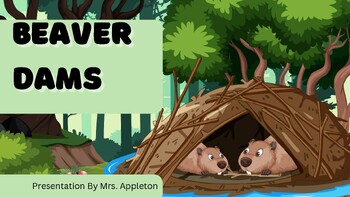Beaver Dam- Activity
Ali J Appleton
2 Followers
Grade Levels
3rd - 8th
Subjects
Resource Type
Standards
CCSSCCRA.L.6
NGSSK-ESS3-1
NGSSK-ESS3-2
NGSSK-ESS3-3
Formats Included
- PDF
Pages
9 pages
Ali J Appleton
2 Followers
Description
This is a fun informational S.T.E.M activity that can be a great gateway to lead up to larger environmental projects on Dams and their functions in society. In this activity the students will be asked to build a dam with only the material provided. Not only is there an activity included the informational slides allow the kids to learn about our furry Beaver friends and their environment. Included are the Virginia competencies that can be achieved by doing this activity and an observational worksheet.
Total Pages
9 pages
Answer Key
Not Included
Teaching Duration
30 minutes
Report this resource to TPT
Reported resources will be reviewed by our team. Report this resource to let us know if this resource violates TPT’s content guidelines.
Standards
to see state-specific standards (only available in the US).
CCSSCCRA.L.6
Acquire and use accurately a range of general academic and domain-specific words and phrases sufficient for reading, writing, speaking, and listening at the college and career readiness level; demonstrate independence in gathering vocabulary knowledge when encountering an unknown term important to comprehension or expression.
NGSSK-ESS3-1
Use a model to represent the relationship between the needs of different plants or animals (including humans) and the places they live. Examples of relationships could include that deer eat buds and leaves, therefore, they usually live in forested areas; and, grasses need sunlight so they often grow in meadows. Plants, animals, and their surroundings make up a system.
NGSSK-ESS3-2
Ask questions to obtain information about the purpose of weather forecasting to prepare for, and respond to, severe weather. Emphasis is on local forms of severe weather.
NGSSK-ESS3-3
Communicate solutions that will reduce the impact of humans on the land, water, air, and/or other living things in the local environment. Examples of human impact on the land could include cutting trees to produce paper and using resources to produce bottles. Examples of solutions could include reusing paper and recycling cans and bottles.





